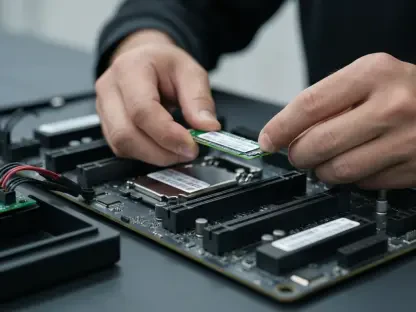What happens when a brand synonymous with affordable innovation releases a smartphone series that fails to ignite consumer passion? In 2025, Xiaomi, a company long celebrated for delivering value-packed devices, finds itself grappling with an unexpected challenge. The Redmi 15 series, touted as the next big thing in budget smartphones, has landed with a thud, leaving fans and critics alike puzzled. A recent weekly poll reveals a stark reality: only a fraction of respondents express genuine interest in these new devices. This surprising lukewarm reception raises critical questions about evolving consumer expectations and Xiaomi’s place in a fiercely competitive market.
The Significance of a Budget Misstep
This lack of excitement isn’t just a minor hiccup for Xiaomi; it signals a deeper issue within the budget smartphone segment. With millions relying on affordable devices for connectivity, work, and entertainment, the stakes are high. A series like Redmi 15, comprising the 5G, 4G, and 4G C models, should have been a slam dunk for a brand with Xiaomi’s reputation. Yet, the disconnect between what consumers want and what has been delivered underscores a pivotal moment for the company to reassess its strategy. Understanding why this series falls short could shape not only Xiaomi’s future offerings but also the broader trajectory of budget tech.
Unpacking the Lack of Enthusiasm
The core issue with the Redmi 15 series lies in its inability to meet modern demands at a budget price point. Consumers today expect more than just low costs; they want decent performance, updated features, and a sense of value. However, poll data indicates that many view this lineup as a step backward, with outdated hardware and missing essentials like the 3.5mm headphone jack in key models. This perception of compromise without justification has dampened excitement, even among loyal Xiaomi users.
Competition adds another layer of complexity to this scenario. Rivals in the budget space are stepping up, offering devices with better specs or more thoughtful design choices at similar price points. Xiaomi’s decision to prioritize cost-cutting over user experience appears to have backfired, as evidenced by a poll showing over 60% of respondents favoring alternatives, including older models from Xiaomi’s own catalog. This trend paints a picture of a brand struggling to keep pace with shifting expectations.
Model-Specific Feedback Reveals Deep Flaws
A closer look at each model in the Redmi 15 series highlights specific pain points. The Redmi 15 5G, while garnering mild interest due to its 5G connectivity, still fails to inspire widespread enthusiasm. Many users see it as a marginally future-proof option, but its overall package lacks the punch to stand out, with complaints centering on mediocre battery life and uninspired design.
In contrast, the Redmi 15 4G faces harsher criticism for its reliance on an outdated chipset that struggles with basic tasks. Opinions are split—some consider it a bare-bones phone for minimal needs, while others argue it’s not worth the price when better options exist. The removal of key features only adds fuel to the fire, alienating users who prioritize practicality in budget devices.
The Redmi 15C 4G, however, takes the hardest hit, with poll results showing it as nearly impossible to recommend. Described by respondents as underpowered and overpriced for its specs, this model epitomizes the series’ shortcomings. Camera performance, a critical factor for many budget buyers, falls short across the board, further diminishing its appeal and leaving potential buyers looking elsewhere.
Hearing from the Community and Experts
Consumer voices from the weekly poll paint a vivid picture of frustration. One respondent noted, “For the price, I expected at least a usable camera, but the photos are just disappointing.” Another highlighted the headphone jack omission, stating, “It’s such a small thing, but losing it feels like a big step back for a budget phone.” These sentiments reflect a broader dissatisfaction with compromises that feel unnecessary in today’s market.
Industry experts echo these concerns, emphasizing the importance of balancing cost with functionality. A tech analyst commented, “Budget phones aren’t just about being cheap anymore; small features can make or break a purchase decision.” This perspective aligns with the poll data, where many pointed out that Xiaomi’s own previous models offer better value, suggesting the brand may have misjudged its audience’s priorities.
Social media chatter amplifies this narrative, with users lamenting a perceived drift from Xiaomi’s core strength of delivering bang for the buck. Posts and discussions reveal a sense of betrayal among long-time fans who feel the company has prioritized profit over user satisfaction. This collective feedback serves as a wake-up call for a brand at a crossroads.
Charting a Path Forward for Xiaomi and Buyers
For consumers navigating this disappointing release, careful consideration is key. Those prioritizing 5G connectivity might find the Redmi 15 5G a passable choice, but only after weighing its other limitations. Exploring competing brands or even Xiaomi’s older models could yield better value, especially for users focused on camera quality or essential features. Researching alternatives and reading detailed reviews before committing to a purchase remains a prudent approach.
Xiaomi, on the other hand, faces a critical opportunity to rebuild trust. Reintroducing beloved features like the headphone jack and ensuring hardware aligns with current standards could help restore faith. Pricing strategies also need reevaluation to reflect true value, avoiding the perception of overcharging for outdated tech. Listening to consumer feedback and acting decisively will be essential for the brand to regain its footing in the budget arena.
Transparency in communication could further mend the gap. Acknowledging missteps and outlining clear plans for improvement might turn criticism into constructive dialogue. With the budget smartphone market only growing more competitive, Xiaomi must adapt swiftly to avoid losing ground to rivals who better understand today’s user needs.
Reflecting on a Missed Opportunity
Looking back, the Redmi 15 series represented a chance for Xiaomi to solidify its dominance in the budget smartphone space, yet it stumbled in execution. The lukewarm reception, driven by outdated hardware and feature cuts, left consumers wanting more from a brand they once trusted implicitly. Disappointment echoed through poll results and user feedback, painting a sobering picture of misaligned priorities.
Moving forward, actionable steps emerged as vital for both Xiaomi and its audience. Consumers were encouraged to explore alternatives and prioritize their needs, while the company faced pressure to innovate and reconnect with its roots. The hope lingered that Xiaomi would take these lessons to heart, crafting future devices that truly resonated with budget-conscious buyers.
A renewed focus on user-centric design and value promised to be the key to redemption. If Xiaomi leveraged this setback as a catalyst for change, the potential to reclaim consumer enthusiasm remained within reach. The journey ahead demanded bold moves and a commitment to excellence, ensuring that future releases avoided the pitfalls that defined this chapter.









